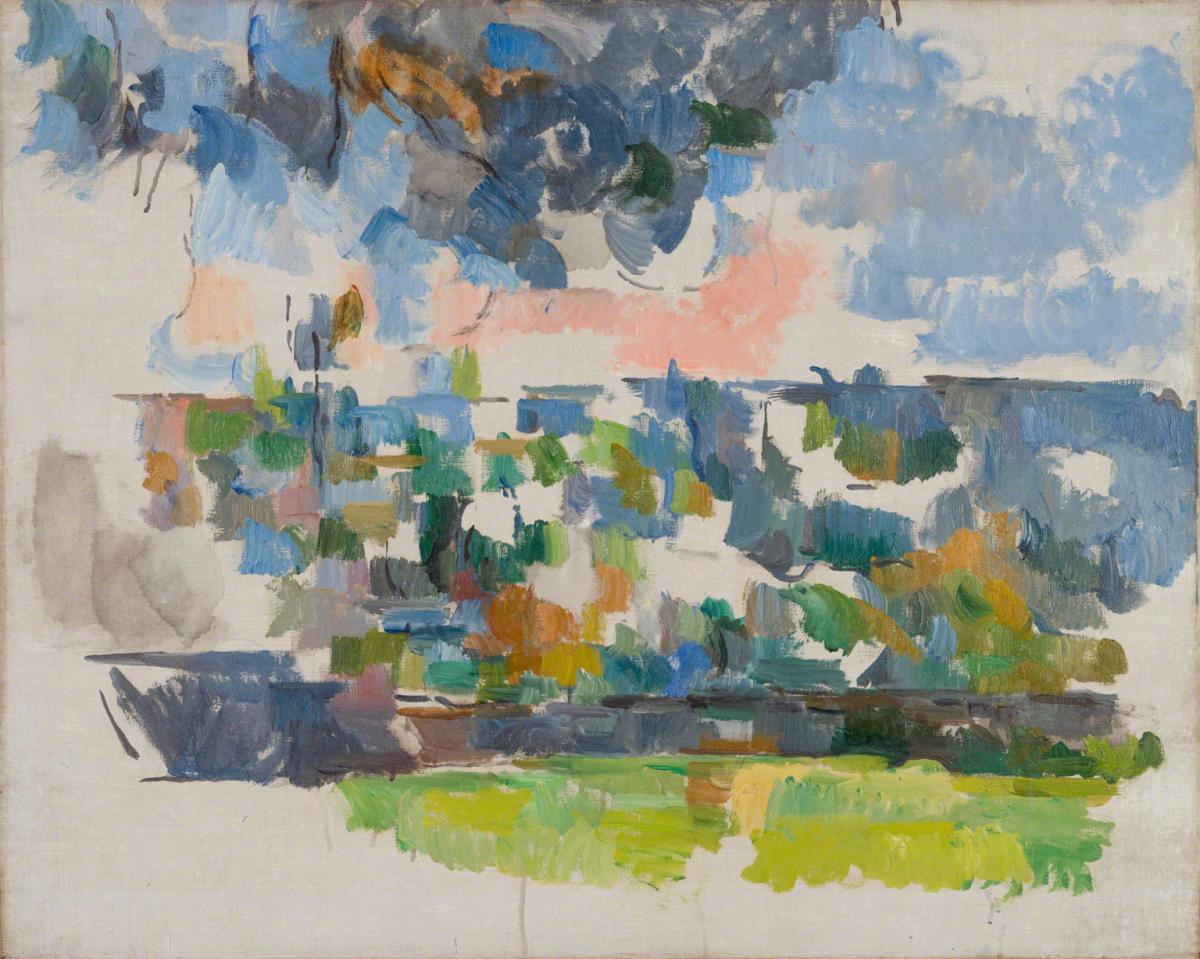The Garden at Les Lauves (Le Jardin des Lauves)
Paul Cézanne ( c. 1906 )

In 1901, Cézanne built a studio north of the city of Aix and about twenty kilometers west of Mont Sainte-Victoire. Chosen for for its panoramic view of his beloved Provence, this commanding site was the main focus of Cézanne’s work until his death in 1906. Dispirited and in failing health, he increasingly turned to painting for spiritual nourishment. Though never mentioned in his letters, The Garden at Les Lauves seems to belong to the “constructions after nature, based on methods, sensations and developments suggested by the model” that Cézanne desired to pursue as late as fall 1906. Writing of the tortuous slowness of his “researches,” Cézanne still reveled in views of “the same subject, seen from a different angle,” with which “I would occupy myself… for months… by leaning once a little more to the right, once a little more to the left.”
The painting resonates with structural solidity and compositional harmony. It seems to be a distilled vision of observations on conveying pictorial space that Cézanne made in a letter to Emile Bernard in 1906: “Lines parallel to the horizon give breadth, that is, a section of nature…. Lines perpendicular to the horizon give depth. But nature…. Is more depth than surface.”